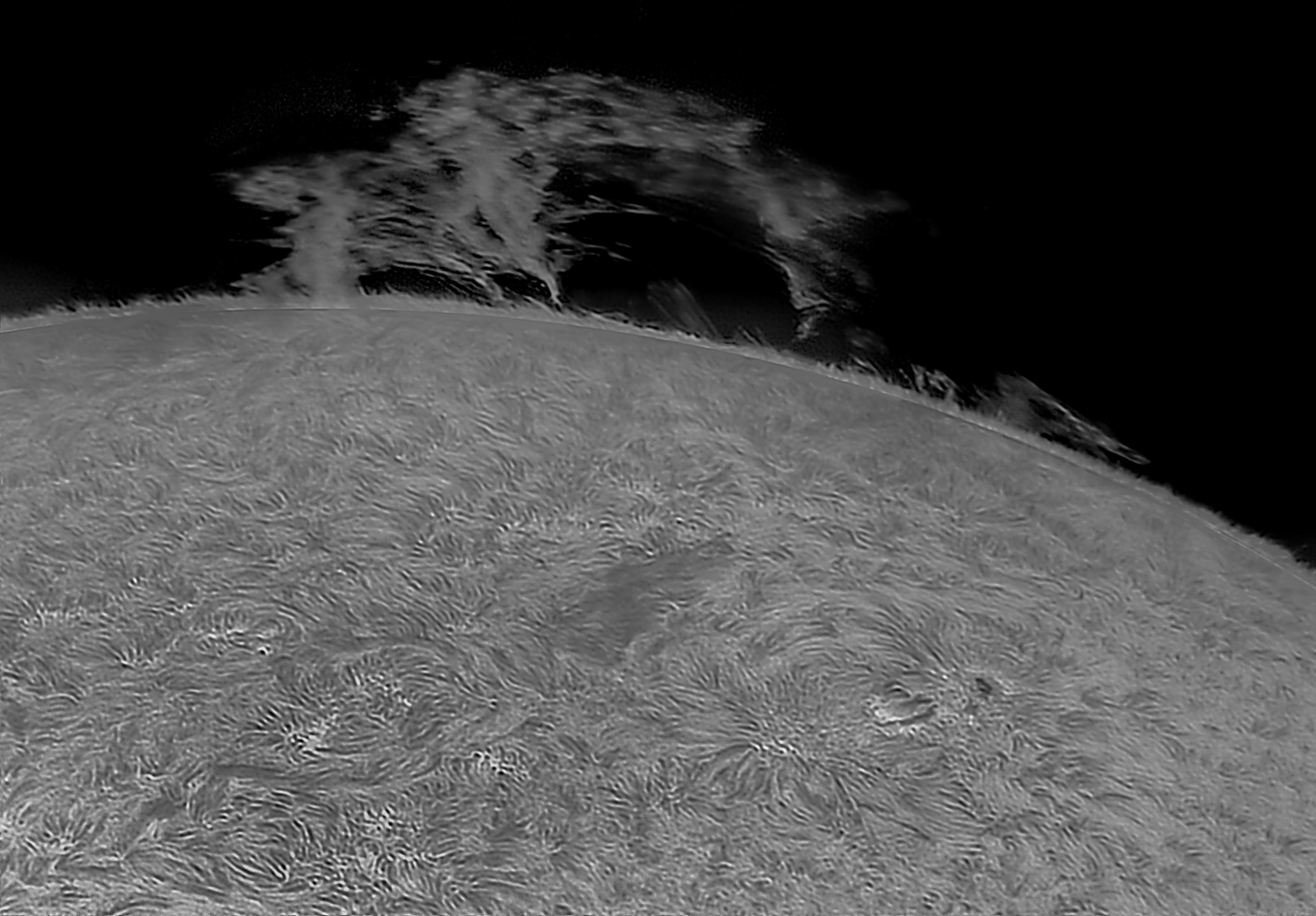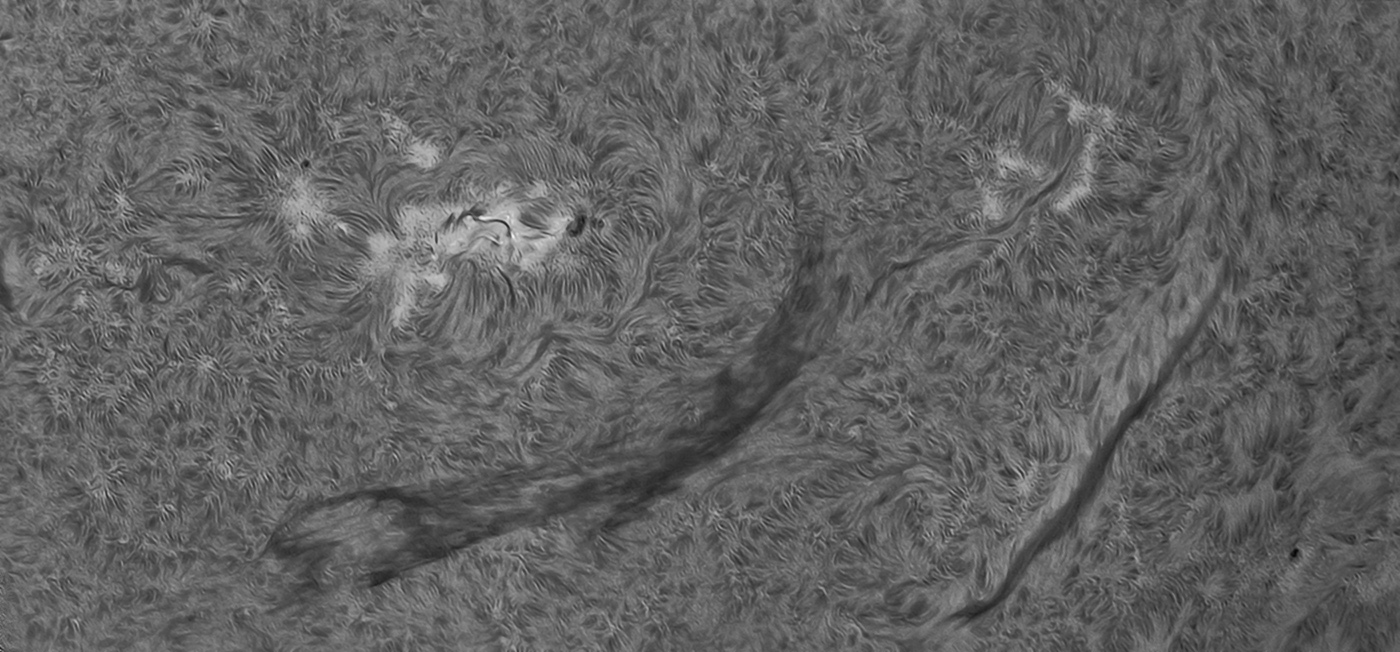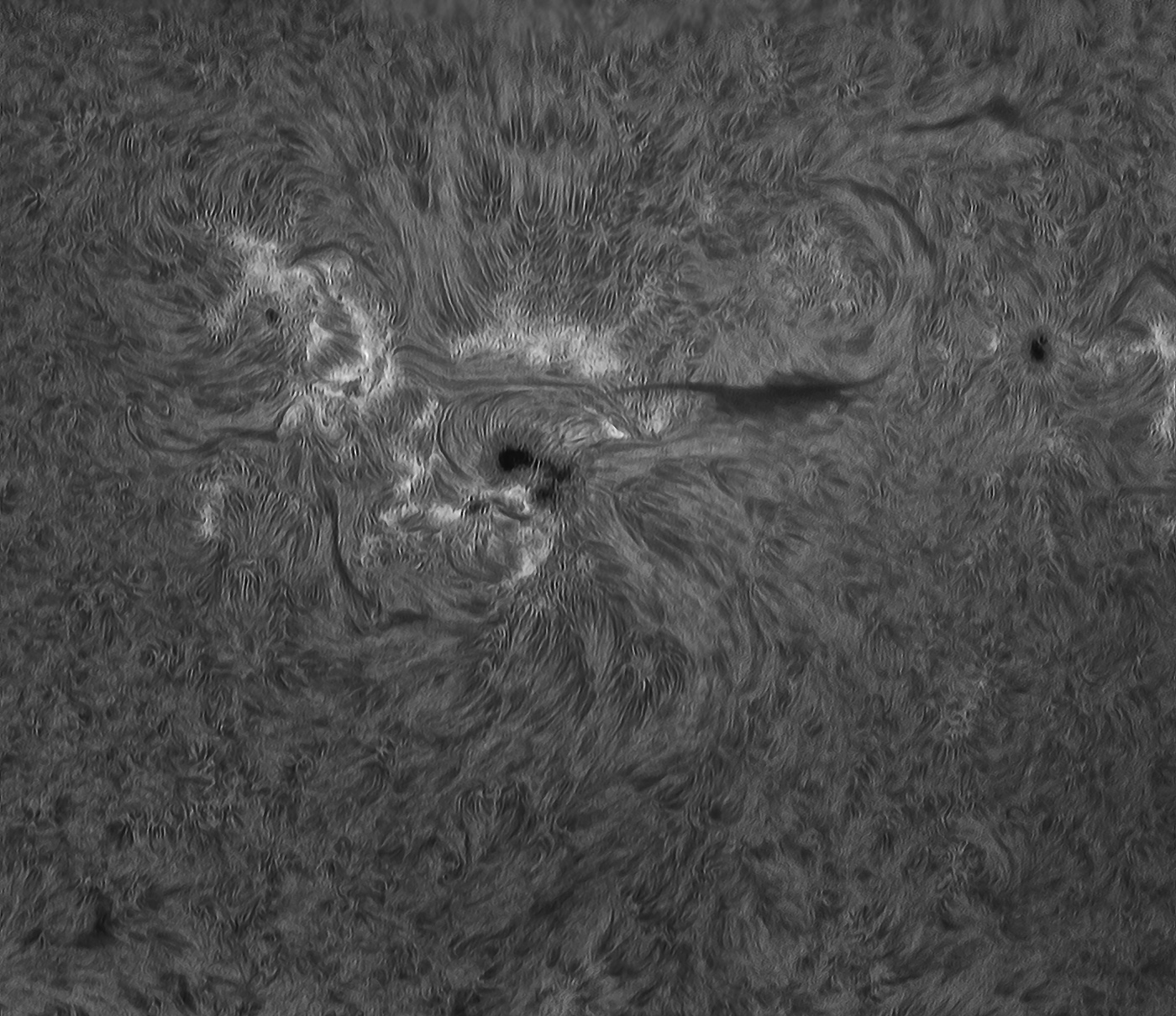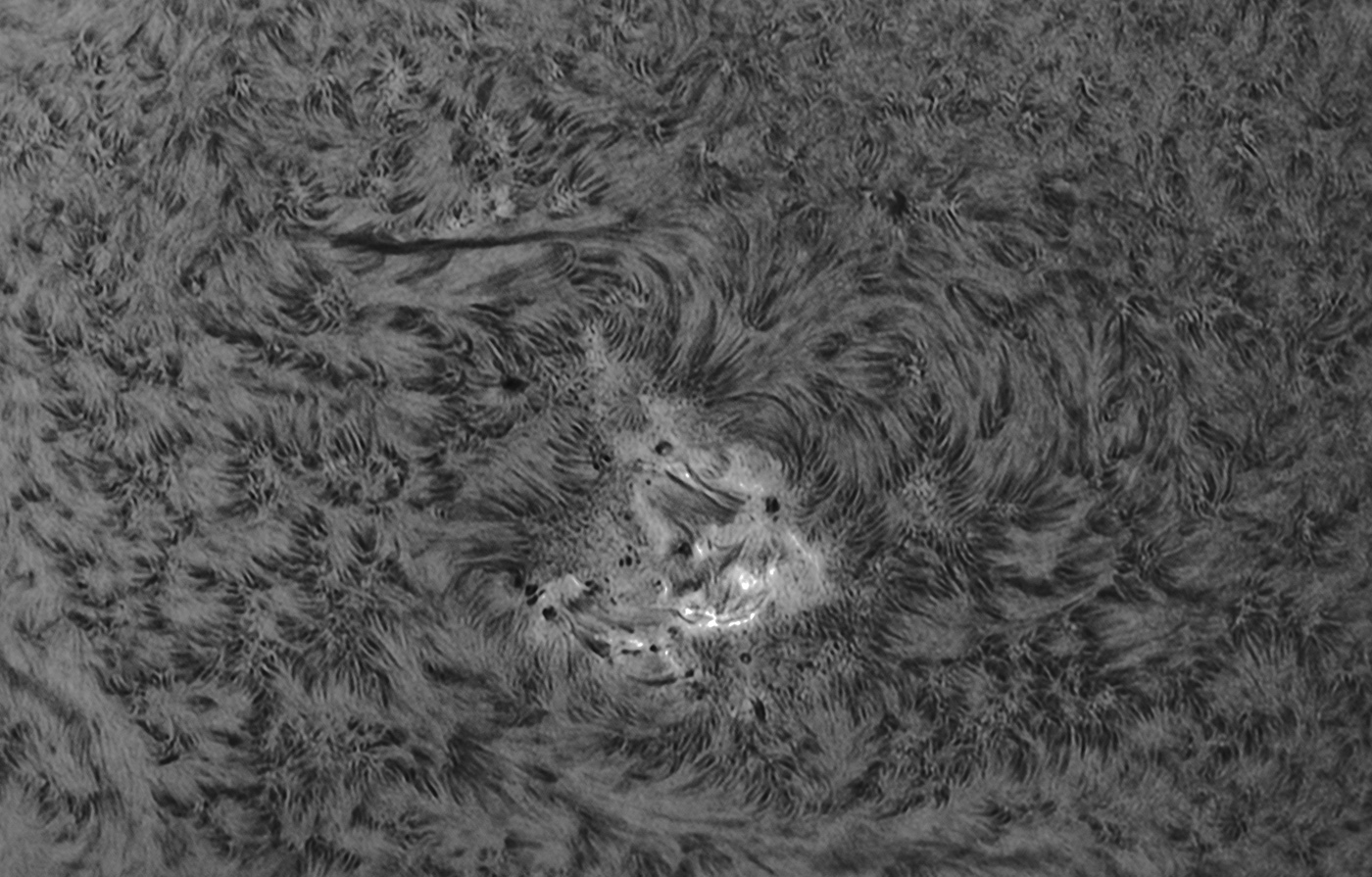Big Prominence
9/15/2023. I had to outwait a cloudy day for a good look at this huge and elaborate prominence. It was even huger and more elaborate yesterday.

Best 250 of 1,000. I tried low gamma (again) but no, as usual, gamma-off and plenty of exposure worked better. Pre-stretch in Camera RAW and Photoshop again helped to retain prominence and surface detail.
There was this huge filament, too.

Two-frame panorama. Best 250 of 1,000 times two.
I spent a lot of time waiting for the telescope to settle and for quiet instants in a gentle breeze. The longer exposures the Quark needs (3-5x longer than the Lunt) give up more sharpness to vibration and shaking. I suspect that I lost as many frames to instability as to seeing. The next day, I moved the SWSA to a Linhof tripod from the Gitzo I've been using. If that doesn't fix the stability issues, then I'll see about other options. At this focal length and this weight, I am asking a lot of the SWSA.
Later that week:


9/23/2023. A ten minute job in the shop -- improved terminals for the lithium battery that powers the astrophoto rig and better bracketry in the power distribution box -- only took me three hours. Not bad. Or at least not unusual. The new terminals consist of small right-angle aluminum tabs held down by the original terminal screws. Wires to the 12v receiver attach to the tabs whose vertical portions allow alligator clamps from my favorite battery charger to connect without drama or doubt. I removed the dowels that served as stand-offs for the power panel in its small Pelican case. I drilled out some oak strips to which I could attach the panel and screwed the oak into place through the Pelican's sides. I was worried about water-tightness until I remembered there was already a 1-inch hole in the case for the 12v plug to pass through (!). The panel is fixed in place much more firmly now and is about half an inch lower, the better to be able to close the case without fiddling around to be sure every detail is stowed just so.
I'm not at all sure that the SWSA on the Linhof is more stable than on the Gitzo. I have too much weight on the SWSA and too much weight at the very end of its counterweight bar. I might try adding weight and shortening the moment arm. Might not. It's a tiny mount doing heavier duty than designed -- it's a talking dog:

9/24/2023. Speak, Toto! Speak! Whatever its weaknesses, it came through while dodging clouds today. That big active region shown above, once with the flowing mane, today brought forth a strong C- or weak M-class flare while I watched. Elsewhere on the Sun, a chaotic region of confused magnetism put on its own show. Here's a mosaic of three frames showing about 60% of the Sun's diameter, then closer views, and finally that maelstrom of magnetism.




All are the best 250 of 1,000 except the closest view which is a high-speed ROI captured using the best 250 of 3,000. Actually three sets of 250 / 3,000 grabbed one after another and blended, so count 'em however you like. That didn't really work out especially well, but I had the data and it was something to try. The largest image scales really need more aperture. Some of the harshness of my solar images is down to pushing too hard on the resolution available from a 92mm aperture. I aim to bring home the G11 mount and 152mm refractor soon; the G11 will also permit me to try the A-P 5-inch in this arena if that seems wise when the moment comes.
My solar images beginning in June 2023 are made using a Daystar Quark Chromosphere filter on a TMB92SS refractor. A 2" Baader 7nm Ha filter and an A-P dielectric diagonal provide extra IR protection. The camera (~2021 et seq) is a ZWO ASI178MM chosen for its tiny pixels and fast capture rate. It is notorious for a nasty pattern noise which can be avoided with careful exposure or removed using FFT-based processing. I capture
data using FireCapture, stack using AS!3, deconvolve and perform initial histogram adjustments using IMPPG, and polish in Photoshop. The solar kit is mounted on a Skywatcher Star Adventurer "tracking platform."
:: top ::